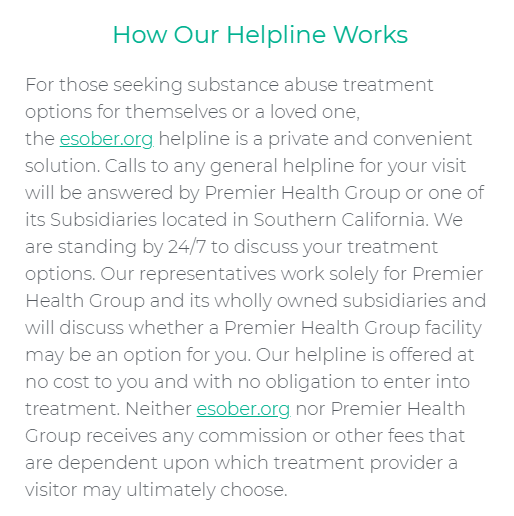Having and enjoying alcohol from time to time is entirely normal. Many of us want to wind down and celebrate after a week’s worth of hard work, others like alcohol for how it can instantly set the mood for those who want to catch up with family or friends. However, if you’re on medication such as sertraline, you may need to think twice before you pop open a cold one.
Sertraline — more popularly known as Zoloft — is prescribed to patients with major depressive disorder, post-traumatic disorder, obsessive-compulsive disorder, and more. Since it has millions of prescriptions in the United States alone, it’s really one of the most used SSRIs or selective serotonin reuptake inhibitors in the market today.
If you’re one of those who enjoy occasional alcohol-filled nights, but you’re on sertraline, you’ll need to rethink your decision to drink alcohol. Until now, many people are still unsure whether it’s safe to mix alcohol and sertraline, what the health risks are, the effects, and more.
Whether or not you’re drinking alcohol with sertraline or know someone who abuses both substances, it pays to know what it can do to your body. In this article, we’ll dig deeper into how these two substances mix and what you can expect when a person withdraws from this combination.
Understand the Dangers of Alcohol and Antidepressants
Right off the bat, we’ll start with this — FDA recommends avoiding alcohol consumption when you’re using sertraline. But why?
Sertraline works to increase the number of serotonin levels in your active brain. And although alcohol can also increase the serotonin levels in our bodies, it also provides adverse effects when consumed with sertraline, making you experience numerous side effects.
The manufacturer of Zoloft, Pfizer, recommends avoiding alcohol at all costs. This is because it increases a patient’s drowsiness, which ultimately affects their motor skills and decision-making.

However, some people don’t follow the rules and take both substances together. While others follow the user guidelines, some still abuse these substances, pushing them to get addicted to the feeling when both substances interact.
Mixing Sertraline and Alcohol
Since Zoloft is one of the most prescribed antidepressants, it’s not surprising that many mix alcohol with this drug. But is it actually okay to do so?
Generally, mixing alcohol and sertraline can affect your brain in numerous ways. Both can impact the neurotransmitters in your brain, and an unwanted interaction may occur, such as blackouts. Besides that, you’re more prone to experience adverse side effects when you mix both substances.
When you mix sertraline and alcohol, some may experience thoughts of suicide, dizziness, nausea, headaches, increased anxiety, digestive problems, impaired coordination, and more. Some may even experience brain-related side effects like impaired judgment, loss of motor skills, slurred speech, and other effects.
Since these effects can be extreme, unpredictable, and hazardous, all medical professionals restrict the use of sertraline and alcohol completely for the patient’s safety.
Sertraline Interactions
Since alcohol and sertraline or Zoloft are drugs, these substances can be quite addictive, and taking more than you’re supposed to can increase your chances of experiencing negative interactions. Below are some of the increased effects when alcohol and sertraline interact:
- Depression;
- Suicidal thoughts;
- Anxiety;
- Dizziness;
- Headaches;
- Nausea;
- Drowsiness;
- Diarrhea;
Besides the effects we mentioned above, alcohol can also increase sedation risk when you consume the substance with sertraline. This means you may experience drowsiness quickly and may put you at risk for other injuries and accidents.
Sertraline Side Effects
Some of the most common side effects of sertraline include drowsiness, nausea, dizziness, and appetite loss. Some less common side effects would be headaches, sweating, increased sleeping problems, upset stomach, and diarrhea. If you’re experiencing any of these side effects or if they have worsened, it’s best to get medical assistance immediately.
Sertraline, like other prescriptions, can benefit you more than give you distress, especially if you follow the user guidelines and don’t mix it with other substances your doctor did not approve of. When you experience negative effects when you’re taking Zoloft, you should speak to your doctor immediately.
This also includes a change in your sex drive or performance, you find blood in your stool, you’re experiencing unexplained weight loss, have vision problems, and more.
What is Sertraline?
As mentioned earlier, sertraline is the generic name for the substance Zoloft, and this brand is one of the most popular and commonly used antidepressant prescription medications today.
Sertraline is used to minimize depression, panic attacks, anxiety, and even premenstrual dysphoric disorder. If you’re experiencing one or more of the symptoms above, sertraline can help improve your mood, boost your appetite, decrease anxiety and fear, and even restore your outlook.
Additionally, sertraline falls under the SSRI category of antidepressants and works to balance the serotonin levels in your brain, regulating your mood, social behavior, digestion, and more.
Today, sertraline is only available for patients with a prescription from a certified medical professional or provider. This medication is taken once daily, before or after a meal. And in a week or two, you’ll already notice changes and improvements in your mood and physical symptoms.
Sertraline Withdrawal Symptoms
Depending on your condition’s severity, the period of use, your dosage, and individual physiology, your withdrawal symptoms will vary. When you gradually stop using Zoloft with the help of your doctor, you may get to reduce and avoid your symptoms altogether.
Doctors recommend gradually reducing sertraline doses for four weeks by decreasing the dose by 50mg every five to seven days, making the final dose 25 to 50mg before you can completely stop using the drug.

The common withdrawal symptoms of sertraline are as follows:
- Changes in the patient’s mood, including low mood, irritability, agitation, and anxiety;
- Nausea;
- Sweating;
- Dizziness;
- Sensory disturbances;
- Headaches;
- Tremors;
- Confusion;
- Sleeping problems;
- Ear ringing;
- Seizures;
Being aware of these symptoms may help you or your loved one counter these effects and help them have a smoother road to recovery. Ideally, you want to ensure that you have your doctor’s supervision, especially when withdrawal symptoms are at their peak.
Sertraline withdrawal symptoms may last from a few days to weeks after your last dose. This is why it’s important to monitor all the changes in the body and ensure that your doctor is keeping track of the effects so they can give you or your loved one proper treatment immediately.
The Bottom Line: Mixing Sertraline and Alcohol Isn’t Recommended
Now that you know the possible effects one can experience when you mix sertraline and alcohol, you must avoid these substances from interacting in your body. Besides experiencing negative physical side effects, it can also affect your brain and motor skills, putting you at risk for even more injuries and accidents.
If you know someone dealing with substance abuse, it pays to understand how these substances work and how you can help to ease the problem. Ideally, you want to find the right treatment for them and check them in a reputable facility where they can get all the care and proper treatment they need to recover.
Sources:
https://www.health.harvard.edu/newsletter_article/what-are-the-real-risks-of-antidepressants




